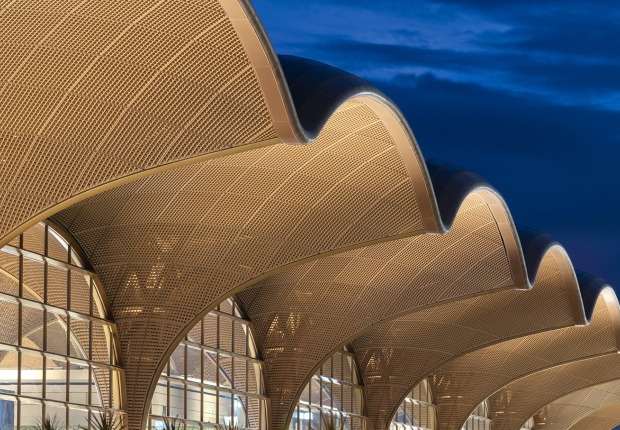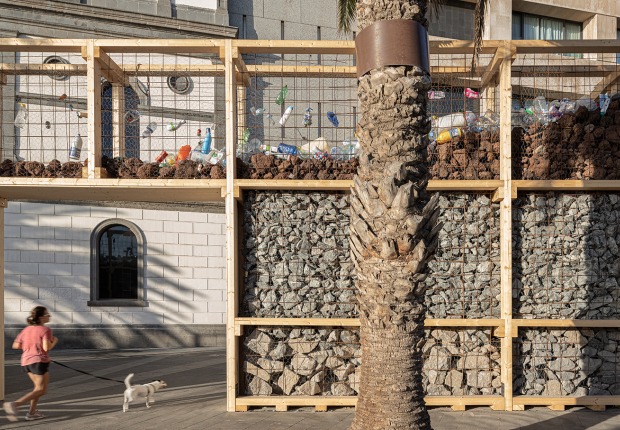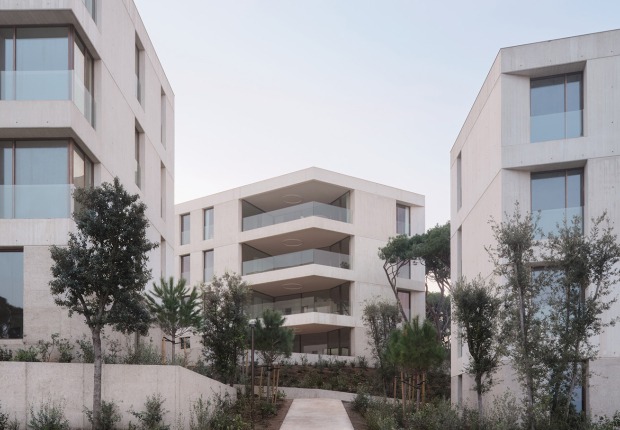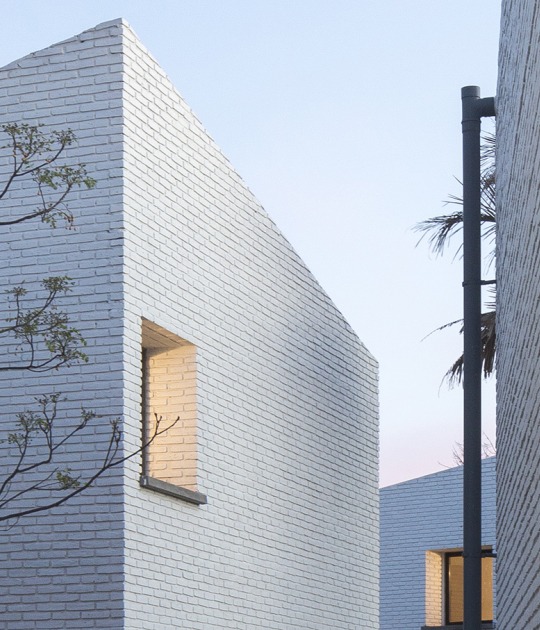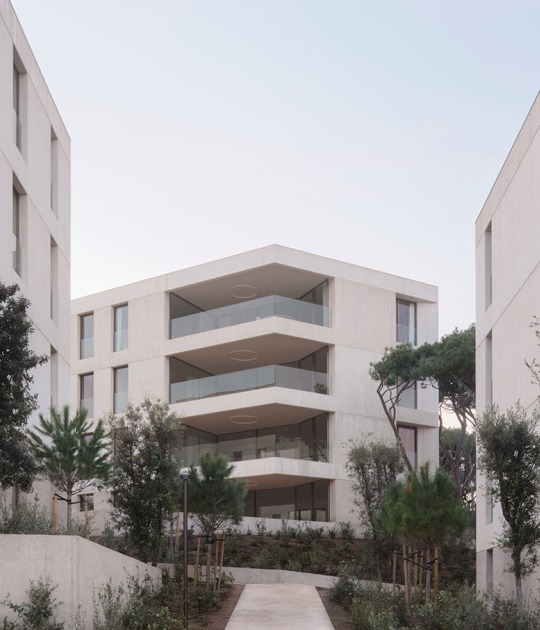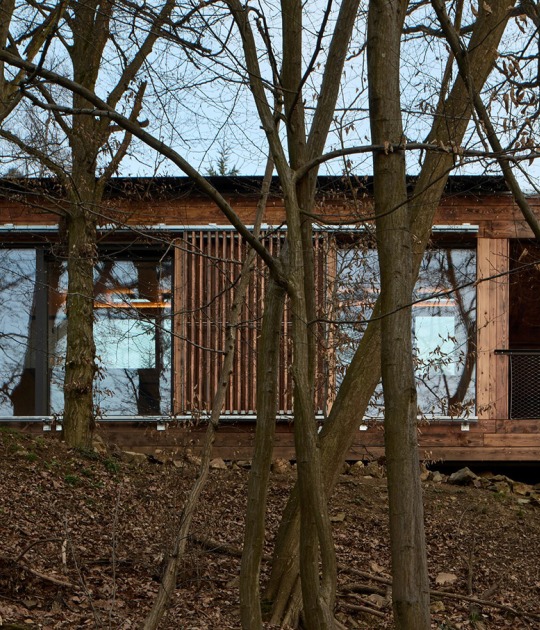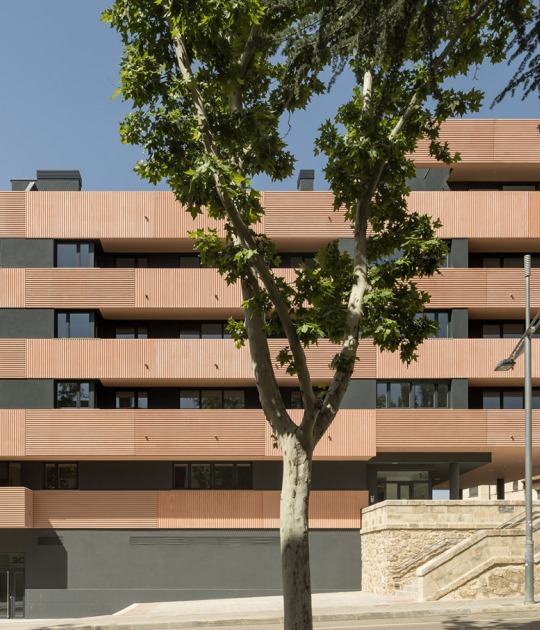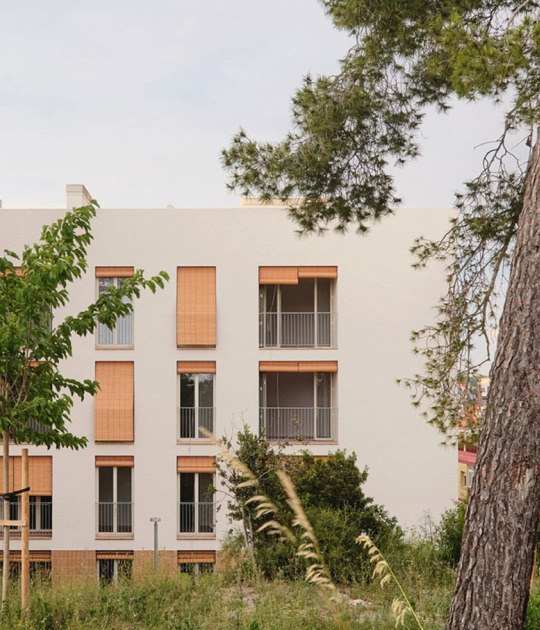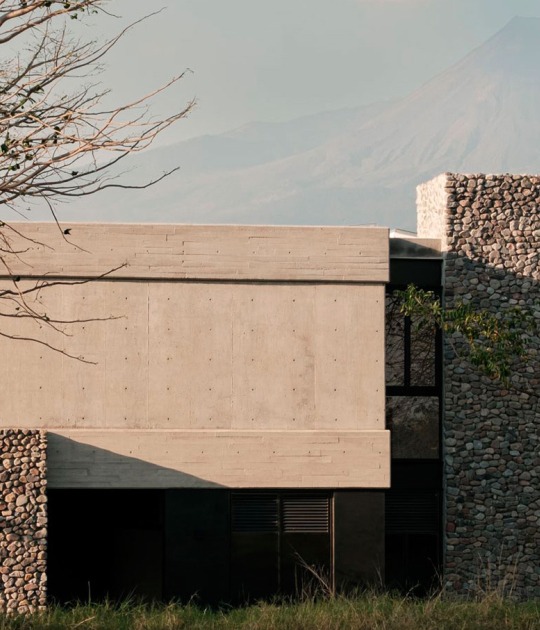The house designed by Ramón Esteve takes its name from the surrounding area, a wonderfull pine wood which both encloses almost the whole project and creates a beautiful natural background.
The composition of the house is divided into four volumes which houses the programs independently. The internal organization responds to the typical Mediterranean gradation of privacy, structuring the plant with a promenade that goes from public space to the private one, where you can glimpse the back garden and the pool.
The very wise choice of materials reinforces the integration of the project in the natural environment that creates the pine wood. The exterior masonry along with the wood carpentry and the corten steel set a very interesting dialogue with this environment.
Description of the project by Ramón Esteve Estudio
The House in the Forest is settled in an extensive residential area. A large pine forest on the plot itself is the closest surroundings of the house.
Sintax
Some prismatic volumes come out from the four stone sidewalls, thus enclosing the space and differentiating each room. The area between the rooms is covered by a timber roof acting as a hall and a connector.
“The opening sequence of the gaps of the house reflects the hierarchical order of the outdoor areas." Text by Ramón Esteve.
Grades of privacy.
The aim of the proposal is the creation of different outdoor areas linked to the rooms inside, according to their level of privacy. Each room is differently high according to its use and spreads its program on a single level, except for the bedrooms’ bay. This operation generates a cross-shaped plan that arranges the external space.
Spatial experience.
Two big stone walls protect the access. While the visitor comes in, the space becomes more permeable, allowing glances to the garden with the pool through the lattice of the barbecue veranda. A timber roof covers the entrance of the house, endowing the hall with a truly human scale. The materials, together with the raking light from a longitudinal roof light, produce a warm and cosy atmosphere. The timber volume works as a connector and distributor of the different rooms, and at the same time opens to all the outdoor areas.
Central concept.
The volumes containing the living room, the dining room and the kitchen, however independents, are visually linked because of their position, making the house wider and more transparent.
The other two volumes host the main bedroom, two bedrooms on the lower floor and a studio on the upper floor. A continuous veranda enlarge the rooms, generating outdoor areas that open and extend the rooms.
Outward appearance.
“Given its location, the materials of the house are taken from the references of the Mediterranean pine forests.”
The masonry walls are combined with afrormosia timber framing to create a private pleasant atmosphere. Some weathering steel lattices, working as shutters on windows and verandas, complete the materials’ palette. A water sheet remembering a pond reflects the house and part of the vegetation.
Inner world.
The dining tables and the barbecue table have been specifically designed for the House in the Forest, being the drawing and the idea of the house recreated by the arrangement of their legs. The interior design is based on the concepts of simplicity, noble materials, chromatic harmony and fluent visual connexion with the external nature.
Text.- Ramón Esteve Estudio.
CREDITS. TECHNICAL SHEET.-
Architects.- Ramón Esteve Estudio.
Collaborator Architects.- Anna Bosca, Víctor Ruiz, Estefanía Pérez, María Marti.
Collaborators.- Silvia M. Martínez, Tudi Soriano. Building Engineer.- Emilio Pérez. Construction company.- Construcciones Francés. Works manager.- Gonzalo Llin
Dates.- Project.- May 2013. Completion date.- April 2014.
Gross Area.- 608 sqm.
Construction type.- Reinforcement concrete structure. Brick and stone mansard.































